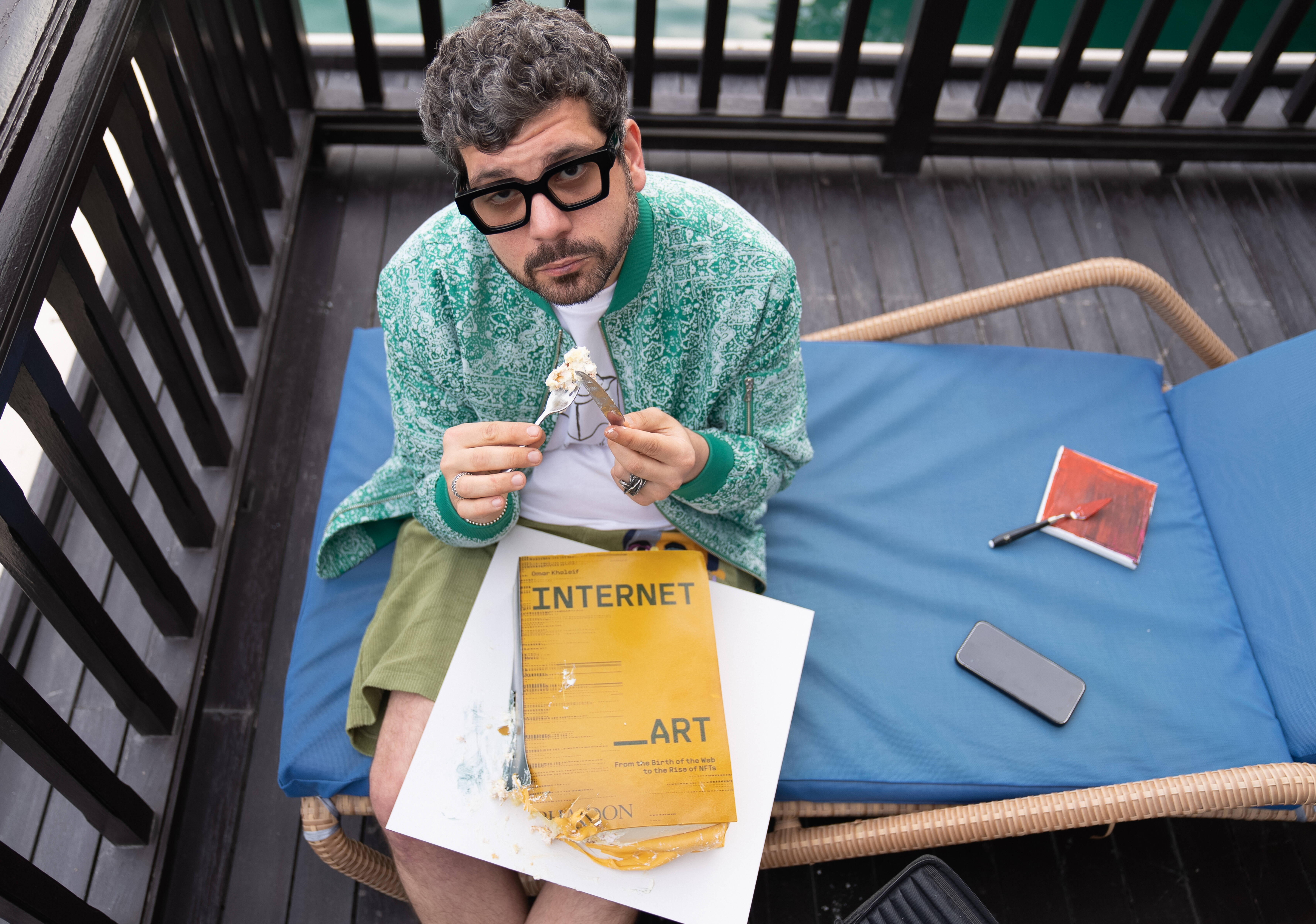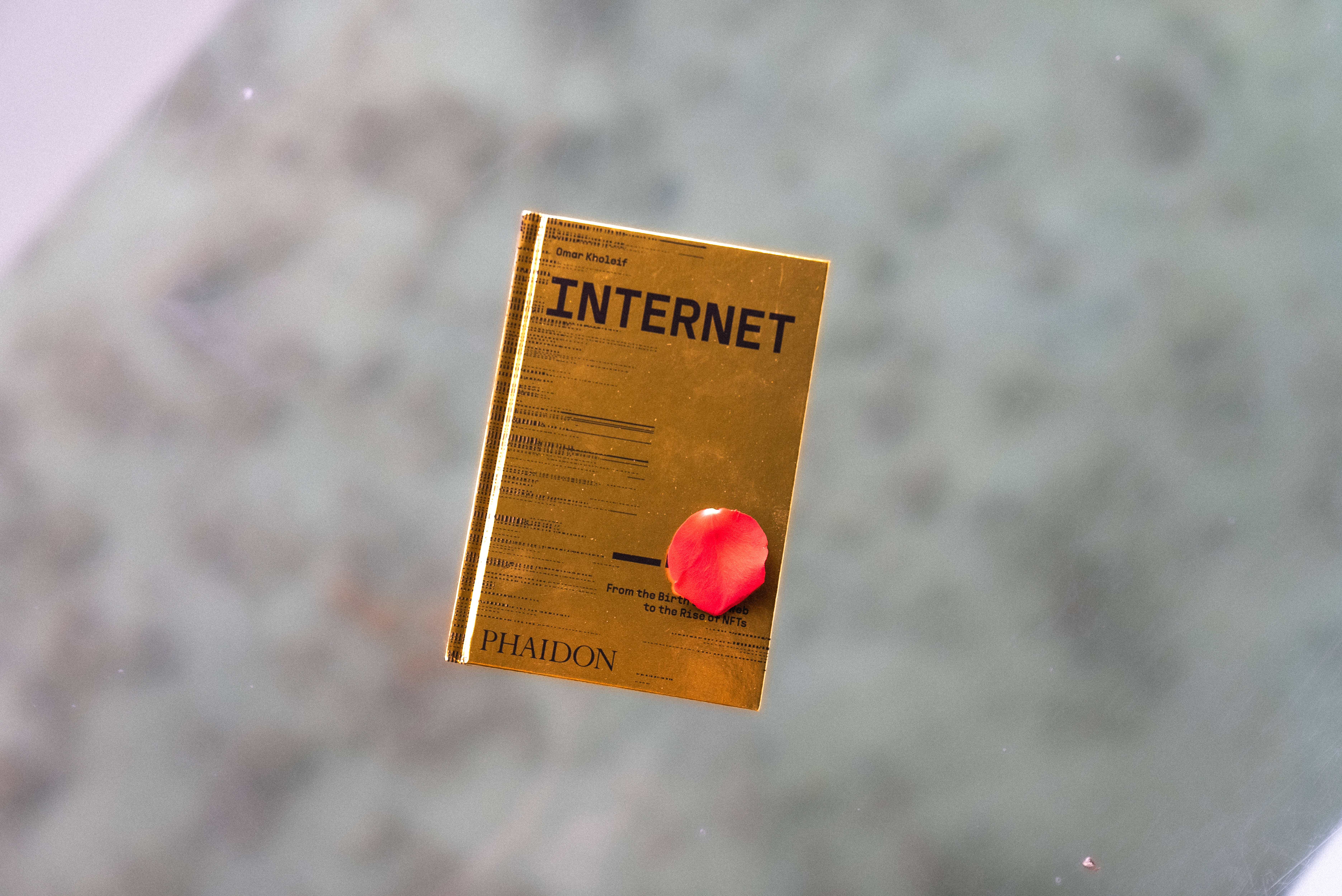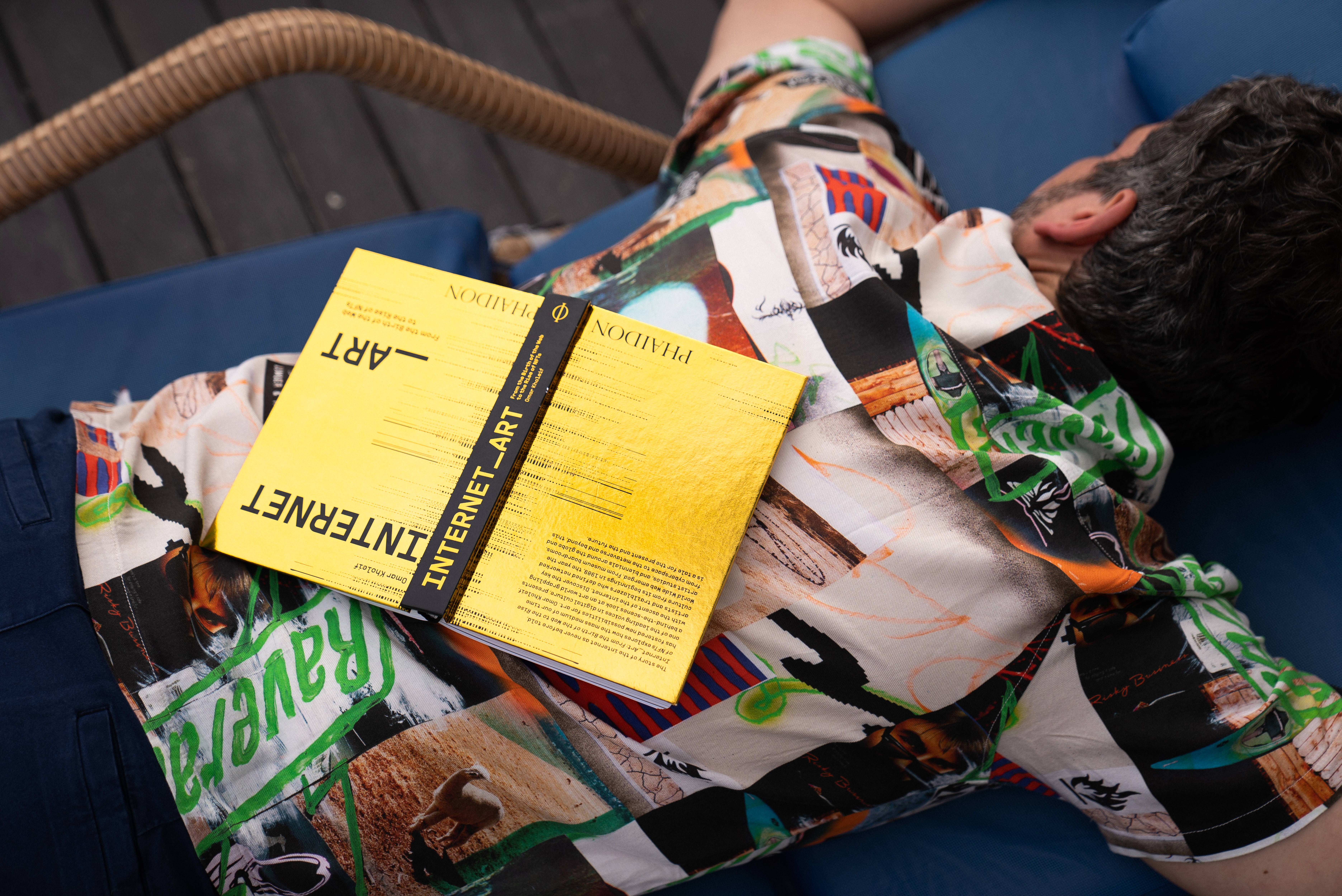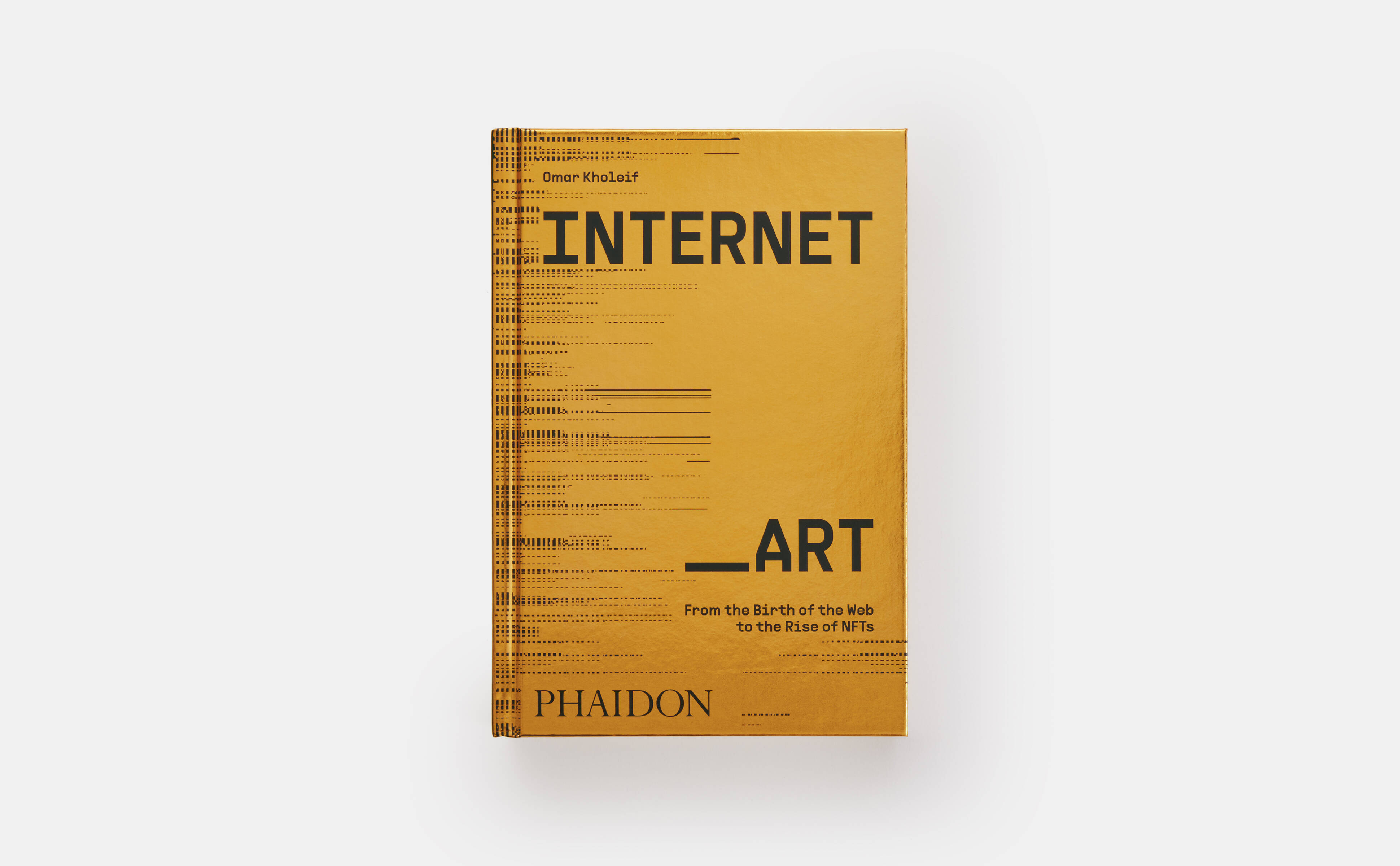
A book in the metaverse
On the eve of the publication of INTERNET_ART, the book’s author, Dr. Omar Kholeif aka the avatar of Dr. O, reflects on how books are the recurring constant in and of the metaverse
Who reads physical books anymore? Reads, I suppose, being the operative word here. Over ten years ago, writing in the foreword to my first published collection, I wrote, “perhaps the book will resurface like the vinyl record?” assuming, as many did, that the tangible life of ink on paper was now dead. Up to that point, most of my authored output was produced for sliding and scrolling fingertips and the non-steady eyeballs on the screen.
In 2021, still in the throes of the crisis of the global pandemic wrought by Covid-19, 843 million printed books were sold in the United States alone, according to BookScan, the highest recorded figure in the 21st century. 788.7 million physical copies were purchased in 2022.
But this was not always assumed to be the likely outcome in the lead-up to the Y2K phenomenon—and the dystopia that surrounded it. The aspiring teenage writer in me thus became a collector of printed ephemera in all of its forms. One of my siblings used to joke if I intended to be buried with 'my junk'. Today, some of my readers query how I intend to take my physical library of first editions, signed copies, and marginalia, which number in the many thousands into the so-called metaverse?
The latter question, more than anything, expresses the necessity of the physical form of the book. This is something I have come to learn as a museum curator—an observer and carer of modern and contemporary history.

INTERNET_ART photo courtesy artPost21
The internet is perhaps the most mutable of mass mediums to emerge as of yet. It is a space and metaphor, but it is also, and I cannot stress this enough, a physical thing. Our augmented selves, our avatars, may experientially elucidate feelings of transcending the body, but they also signal a re-entrenchment of the embodied experience. The energy used to accentuate our lived experience, whether through a VR headset, through all-encompassing headphones, or the like, rely on connections to be made in and with physical objects.
I begin the book, Internet_Art: From the Birth of the Web to the Rise of NFTs, by reflecting on the bleeping and burping of our first family computer. I do this in an attempt to evoke a metaphor for the networked cables and wire; the hard mechanical world of server farms and data centres that although seemingly anonymous and abstract, constantly back up our data in physical spaces. As artist Lawrence Abu Hamdan reminded me recently, electricity may seem intangible to some in an LED lightbulb, but it is connected to a source of physical power in a 'generator' of some form.
I began my career writing screeds of criticism for websites, blogs, and other online news media outlets. Many of those no longer exist. Today, there is no discernible trail that I could find online by searching for them. The hard drives that housed them are now lost or inaccessible—no longer compatible with my media devices. I believed that everything that I had once put online would exist forever. I was yet to comprehend media archaeology, and the necessary care required of digital assets, which very much resemble the needs of the physical world.
Today, the first book that I had published, is almost fifteen-years-old. It is barely wilted or worn. I can return to it at any time. It is in physical libraries around the world in multiple-editions, taught on university and high-school curricula, and collected by readers alike.
 INTERNET_ART author photo courtesy artPost21
INTERNET_ART author photo courtesy artPost21
So why write a book about art in the age of the internet? Because history is cyclical. An astute historian of culture is constantly archiving the present as it happens. With Internet_Art: From the Birth of the Web to the Rise of NFTs, I have sought to author a book that is both an object—a luminescent block of gold that shimmers, reflects and refracts, much like the subject, but that also narrates the frantic journey that has brought society up to this point—and I have sought to do so through my own eyes because we connect with and to the personal now, more than ever.
The metaverse has quickly come to mean many things to many people—entering us into a state of the here and after. It is also conceived as a total immersion of mind and body into an alternative form of space. When the printing press became a popular form of technology that is also what it did. It fashioned totalising immersive worlds for a broader readership. And so, although I have been informed to believe otherwise, I still find myself coming back to this point once again, I need a copy of that book! Welcome to the 21st century.
Dr. Omar Kholeif aka Dr. O, among other avatars, is the author or co-author of dozens of books on contemporary art and culture. Their latest volume, Internet_Art: From the Birth of the Web to the Rise of NFTs is available now.
You can catch Dr. O in discussion with Jeffrey Deitch this Wednesday, 26 April 2023 at 7000 Santa Monica Blvd, Los Angeles. The event is free with RSVP and you can register here.

Dr. Omar Kholeif is the author of Internet_Art: From the Birth of the Web to the Rise of NFTs.